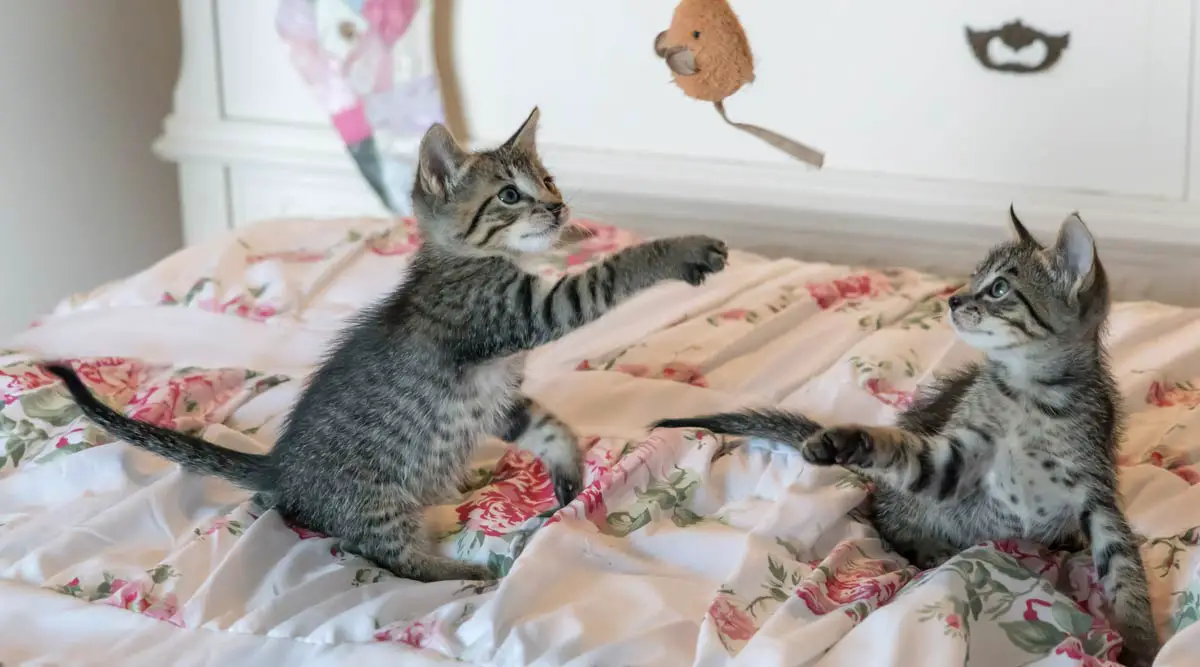Cats are fascinating creatures with unique behaviors that can sometimes leave their owners puzzled.
Understanding their behavior is key to maintaining a healthy and harmonious relationship.
In this article, we will explore 10 common cat behaviors, their possible causes, and effective solutions to address them.
Whether you’re a seasoned cat owner or a new enthusiast, this guide will help you decode the mysteries behind your feline friend’s actions.

1. Scratching Furniture
| Cat behavior | Causes | Tips |
|---|---|---|
| Cats have a natural instinct to scratch, which helps them maintain healthy claws and mark their territory. | – Boredom – Lack of appropriate scratching posts – The need for territorial marking | – Provide suitable scratching posts or boards – Use deterrents on furniture – Engage in interactive playtime to alleviate boredom. |
2. Excessive Meowing
| Cat behavior | Causes | Tips |
|---|---|---|
| Cats communicate through meowing, but excessive vocalization can be bothersome. | – Hunger – Boredom – Stress – Seeking attention | – Ensure regular feeding – Create a stimulating environment, address underlying stressors – Provide attention when appropriate – In some cases, consulting with a veterinarian or animal behaviorist may be necessary. |
3. Aggression
| Cat behavior | Causes | Tips |
|---|---|---|
| Cats may exhibit aggression towards humans, other animals, or objects. | – Fear – Pain – territorial disputes – Improper socialization. | – Identify triggers and eliminate stressors – Provide a safe space – Consult a veterinarian if pain-related – Implement positive reinforcement techniques. |
4. Litter Box Problems
| Cat behavior | Causes | Tips |
|---|---|---|
| Cats may refuse to use the litter box, opting for alternative areas. | – Dirty litter box – Litter preference – Medical issues – Stress. | – Keep the litter box clean – Try different types of litter – Rule out medical problems – Create a calm environment – Use positive reinforcement for appropriate use. |
Related:
Following 5 Steps for Training Your Cat or Kitten to Use the Litter Box
5. Nighttime Activity
| Cat behavior | Causes | Tips |
|---|---|---|
| Cats tend to be more active during the night, causing disturbances. | – Natural hunting instincts – Lack of stimulation during the day – Reversed sleep patterns. | – Provide interactive toys – Playtime before bedtime – Establish a routine, and create a quiet sleeping area. |
Related:
Top 10 Best Cat Beds: A Comprehensive Guide to Choosing The Perfect Bed for Your Cats
Cat Vision: Understanding How Cats See the World

6. Excessive Grooming
| Cat behavior | Causes | Tips |
|---|---|---|
| Cats groom themselves regularly, but excessive grooming can lead to skin problems. | – Stress, anxiety – Allergies, or parasites. | – Identify stressors and reduce anxiety – Provide a balanced diet – Treat underlying medical conditions – Seek veterinary advice if necessary. |
Related:
Cat Diseases: Ringworm in Cats (Signs, Treatment & Prevention)
Cat Diseases: Mange in Cats (Causes, Treatment & Prevention)
7. Counter Surfing
| Cat behavior | Causes | Tips |
|---|---|---|
| Cats may jump on countertops or tables, seeking food or exploration. | – Curiosity – Availability of food – Learned behavior. | – Remove temptations – Secure food sources, redirect attention to appropriate areas – Reward desirable behavior. |
8. Pouncing and Play aggression
| Cat behavior | Causes | Tips |
|---|---|---|
| Cats may engage in playful attacks, which can sometimes become aggressive. | – Excess energy – Lack of appropriate toys – Poor socialization. | – Provide interactive toys – Engage in regular play sessions – Redirect aggression to toys, and discourage rough play. |
9. Hiding
| Cat behavior | Causes | Tips |
|---|---|---|
| Cats may seek hiding spots and avoid social interaction. | – Fear – Stress – Need for a secure and quiet space. | – Provide hiding spots – Create a calm environment – Gradually introduce socialization. |
10. Furniture Climbing
| Cat behavior | Causes | Tips |
|---|---|---|
| Cats may seek hiding spots and avoid social interaction. | – Exploration – Exercise – Seeking a high vantage point. | – Provide vertical spaces like cat trees – Offer alternative climbing surfaces – Redirect to appropriate areas, and discourage unwanted behavior. |

Conclusion
Understanding your cat’s behavior can help strengthen the bond between you and your pet while also addressing any potential issues.
By providing your cat with a comfortable and enriched environment and addressing any medical or behavioral issues, you can ensure a happy and healthy life for your feline friend.










